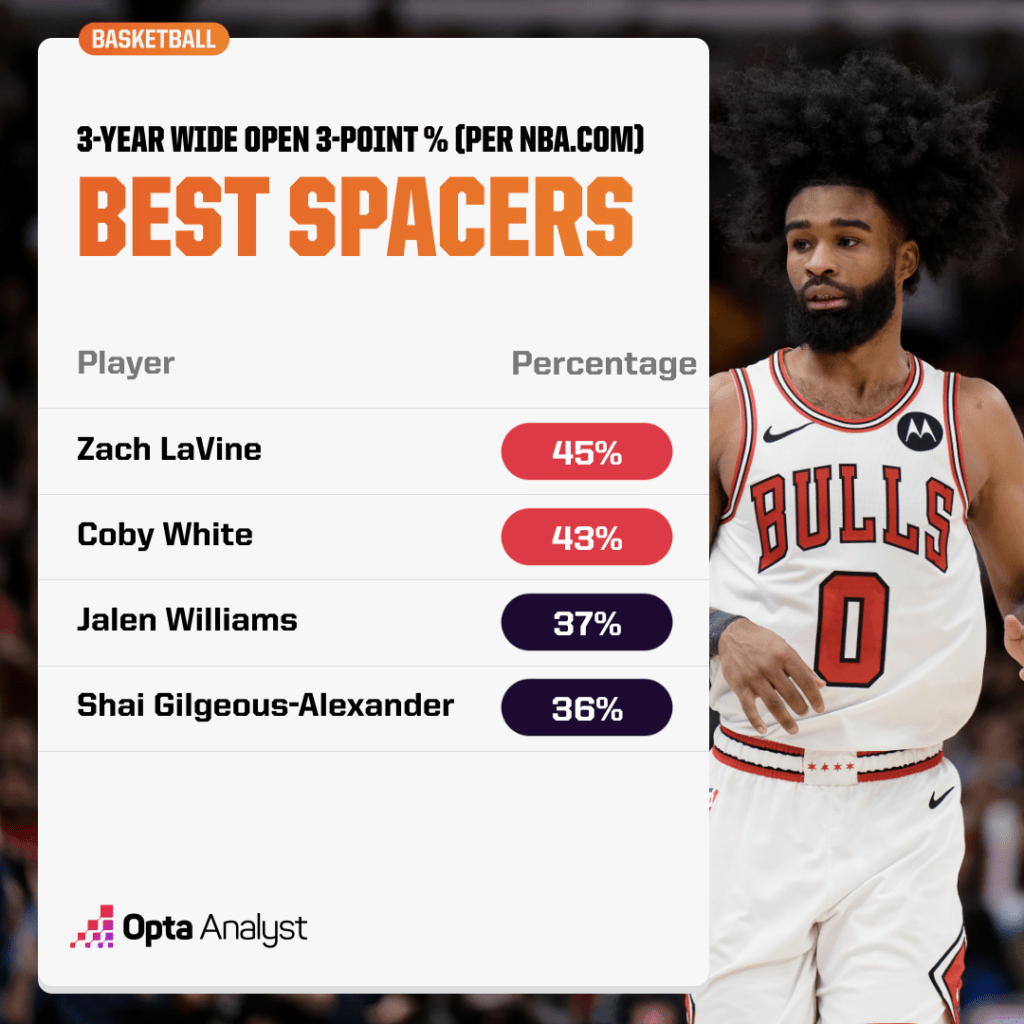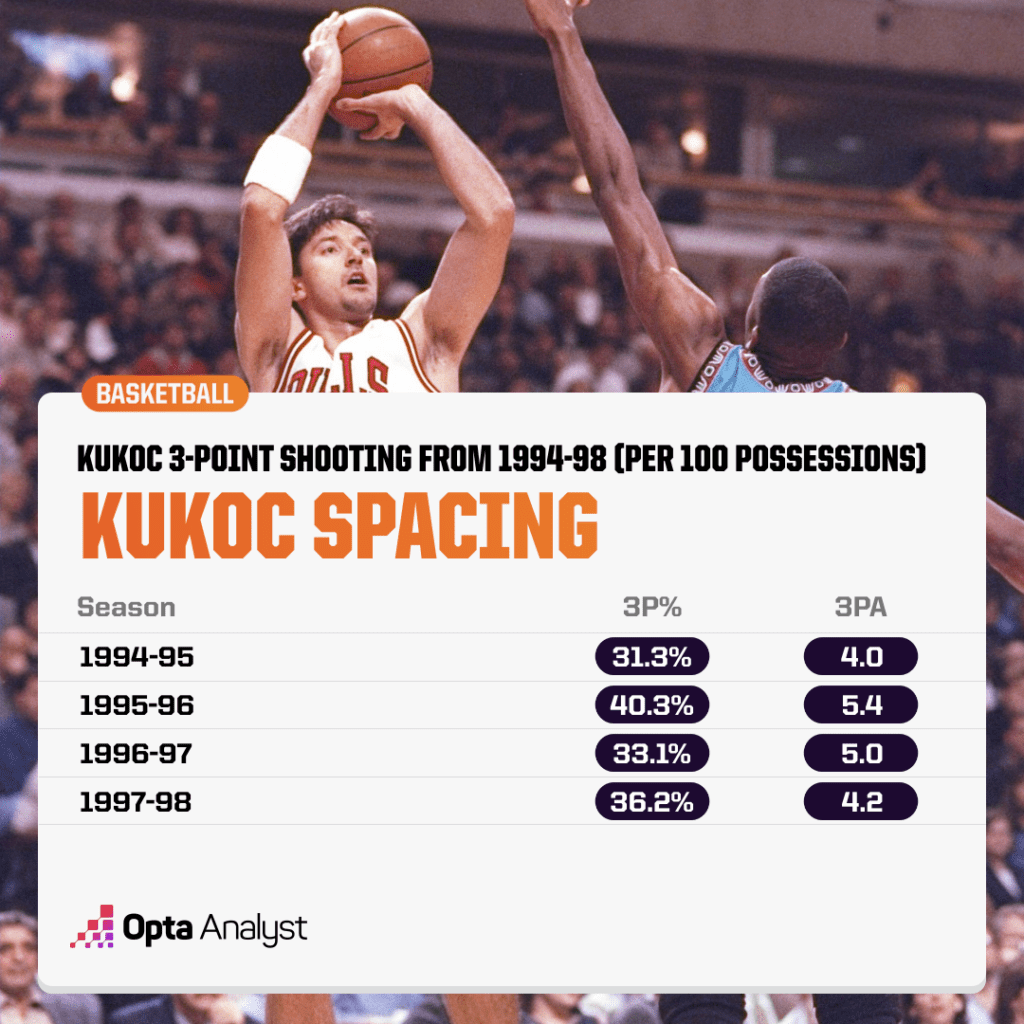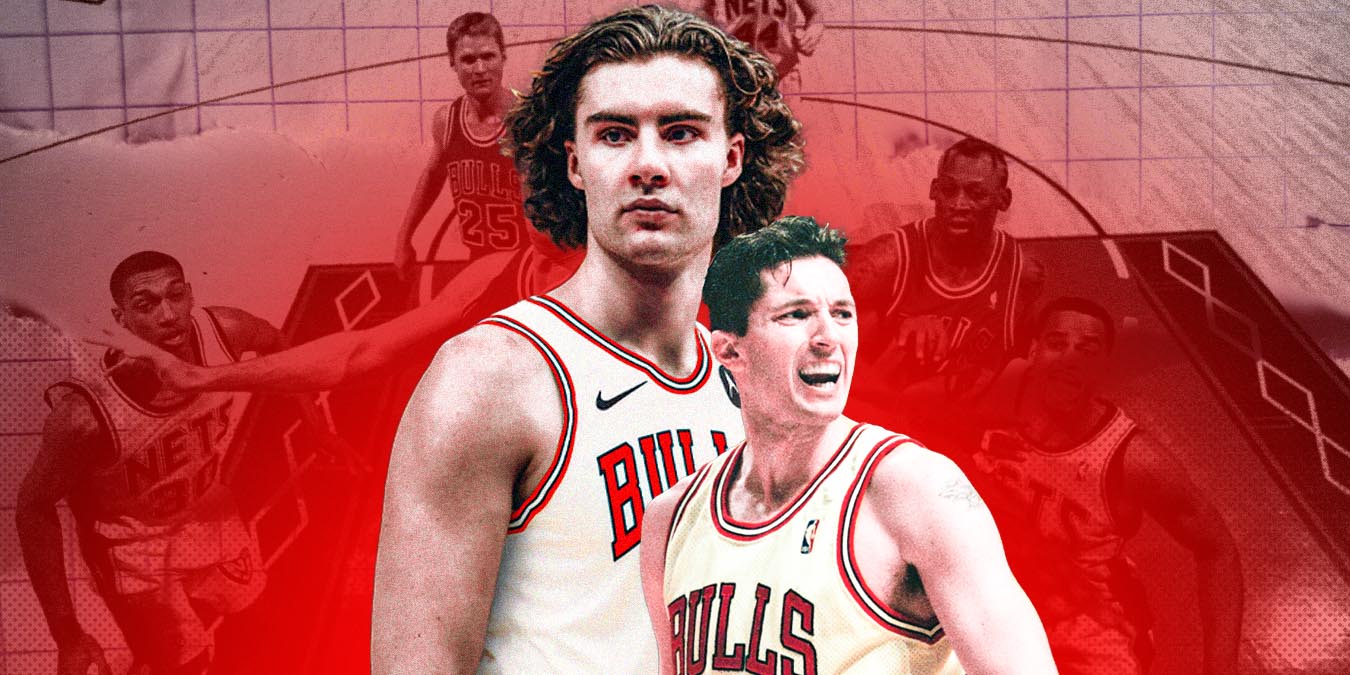The vast majority of analysts believe the Bulls came up short in the all-defensive star Alex Caruso for fellow guard Josh Giddey trade. But does Chicago have a path to winning the deal? We take a closer look at the big pre-NBA Draft move.
It is easy to dunk on the Chicago Bulls and their seemingly aloof front office.
After all, they just traded away arguably their most valuable trade asset (Alex Caruso) for a player (Josh Giddey) who was played off the floor in the Oklahoma City Thunder’s second-round Western Conference matchup against the Dallas Mavericks.
Even more damning is the Bulls reportedly had much better offers for Caruso at the 2024 NBA trade deadline, but instead, decided to hold on to him to make a run at the play-in tournament and maybe reach the first round of the playoffs.
To put it out there, I am in the camp that believes that the OKC Thunder, already NBA title contenders, won this offseason deal. However, I’ve been around long enough to know that almost any time a trade looks very lopsided on the surface, it turns out to be much more symbiotic when we reflect on it years down the road.
So, are the Bulls really as incompetent as it initially seems? Or could this be another situation in which general manager Marc Eversley and head coach Billy Donovan saw something that we didn’t? And if so, what would need to happen in order for them to win the Alex Caruso trade?
The Giddey Player Comp
Nearly two years ago, I said that Giddey would do well to try and follow in the footsteps of Hedo Turkoglu. However, after seeing Giddey develop some more and realizing that his pull-up jumper has a long way to get where Turkoglu’s once was, I’m going to retract my previous observation and replace it with a different player comparison.
Last summer, I had the privilege of taking a deep dive into the game of former Bulls sixth man Toni Kukoc, and one of the first things that jumped out to me was how similar his game was to Giddey’s. Now, the two have some notable differences (which we will get to later on), but Kukoc’s player outline is one that is fairly replicable for Giddey.
First off, like Giddey, Kukoc was an elite passer. According to Ben Taylor’s passer rating metric (an estimate of a player’s passing prowess on a scale of 1-10), Kukoc placed in the 91st percentile or higher every year from 1994-99.
Kukoc relied on his quick process speed, pinpoint accuracy, and elevated vantage point (all features that Giddey touts) to execute a plethora of different passes.
Designated with the moniker the “SLOB Wizard,” Giddey is an equally skilled deliverer of the basketball. Both Kukoc and Giddey are elite passers/decision-makers, but you wouldn’t be able to guess it from their assist numbers (Kukoc averaged 3.7 for his career, while Giddey averages 5.7).
This gets to another major commonality between them – neither are volume scorers. Both Kukoc and Giddey suffer from looser handles and shaky pull-up jumpers. As a result, neither one of them has ever posted elite volume scoring numbers.* And you need the threat of volume scoring to unlock volume playmaking.
[*Sidebar: Kukoc’s best volume scoring regular season (measured by points per 100) during the Bulls’ dynasty only ranked in the 78th percentile. Meanwhile, Giddey’s best volume scoring season (2022-23) was in just the 70th percentile.]
Instead, Kukoc used his prodigious passing and decision-making skills to serve as a role player and secondary ball handler next to volume scorers who could oscillate between playing on and off the ball (Michael Jordan and Scottie Pippen).
You may read this and wonder: Isn’t that the role Giddey just failed at with the Thunder? Not necessarily. Shai Gilgeous-Alexander and Jalen Williams don’t have the same off-ball value relative to this era that Jordan and Pippen had in theirs. However, new teammates Coby White and Zach LaVine (if they decide to keep him) are much more equipped to fill this kind of role, as evidenced by their wide-open 3-point shooting numbers (a solid measure of off-ball utility).

Flexible Team-Building
Speaking of eras, Kukoc was a better shooter/spacer for his time than Giddey is now. At that time, players weren’t as skilled. So, being a mid-30% 3-point shooter on decent volume (like Kukoc was for most of his prime) made you a pretty solid spacer.
Giddey, at 33.7% from 3, was only in the 33rd percentile in efficiency (and he was only in the 36th percentile in 3-point volume). This means that Giddey offers less spacing (and needs more placed around him) than Kukoc did. However, there is a way for him to make up for that restriction with his defense.
During his time, Kukoc was often perceived as a poor defender. However, his great length (6-foot-10) and ability to play primarily small forward enabled him to be a part of elite Bulls defenses in the middle/back half of the 1990s.
Despite his length, though, Kukoc never surpassed a block rate of 1.4%. That was fine because his extra spacing/ball handling allowed the Bulls to play more rim protection next to him (since they didn’t need to worry about finding more spacing and ball handling).

Giddey is in the same boat in that his size (6-8) is his greatest defensive asset. But unlike Kukoc, Giddey has the potential to be a strong positional rim protector. Last season, Giddey surpassed Kukoc’s best career block season with a block rate of 2% (61st percentile league wide).
His other rim protection indicators were pretty promising. Though he managed just a minus-0.1 defensive DRIP overall last season, Giddey finished in the 71st percentile in shots defended inside of 6 feet and the 75th percentile in percentage points different (DIFF%) on those contests (per NBA.com).
Again, that’s compared to the entire league (even centers), meaning that if he’s playing guard for the Bulls with Lonzo Ball not likely to return, he’ll be giving them high-end rim protection for that position (something that the Boston Celtics taught us is very important to have).
So, since Giddey gives the Bulls more rim protection at a position you don’t normally get it from, they can use other positions to prioritize putting more spacing around him (retaining Patrick Williams would help in this regard).
Putting It All Together
At the end of my study, I concluded that Kukoc’s progressive skill set (and the unique pathways it provided his team from a roster-building standpoint) made him an All-Star caliber performer during his prime (even though he never earned an official All-Star nomination).
Given the way skill curves work, what made a player an All-Star in the 1990s likely wouldn’t do the same for them now. In today’s game, a Kukoc-like player is more like a top-50 player than a top-25 one at their peak.
Yes, the Bulls are getting significantly younger by moving from the 30-year-old Caruso to the 21-year-old Giddey, but as we’ve outlined, Giddey’s blend of size and ball skills gives the Bulls a similar luxury that Kukoc once gave them. Since he’s such a good passer/decision-maker, they can play him at either point guard or shooting guard. And since he’s so tall for that position, he gives Chicago rim protection value at a position it normally wouldn’t get.
Now, the Bulls just need to be sure to surround him with spacing and volume scorers (and primary rim protection, of course). If they do that, Giddey could blossom into a top-50 player during his prime.
And if that happens, the Bulls will be the ones who are doing the laughing.
Be sure to check out all our MLB, NBA, college football and NFL coverage. And follow us on X and Instagram for more!
